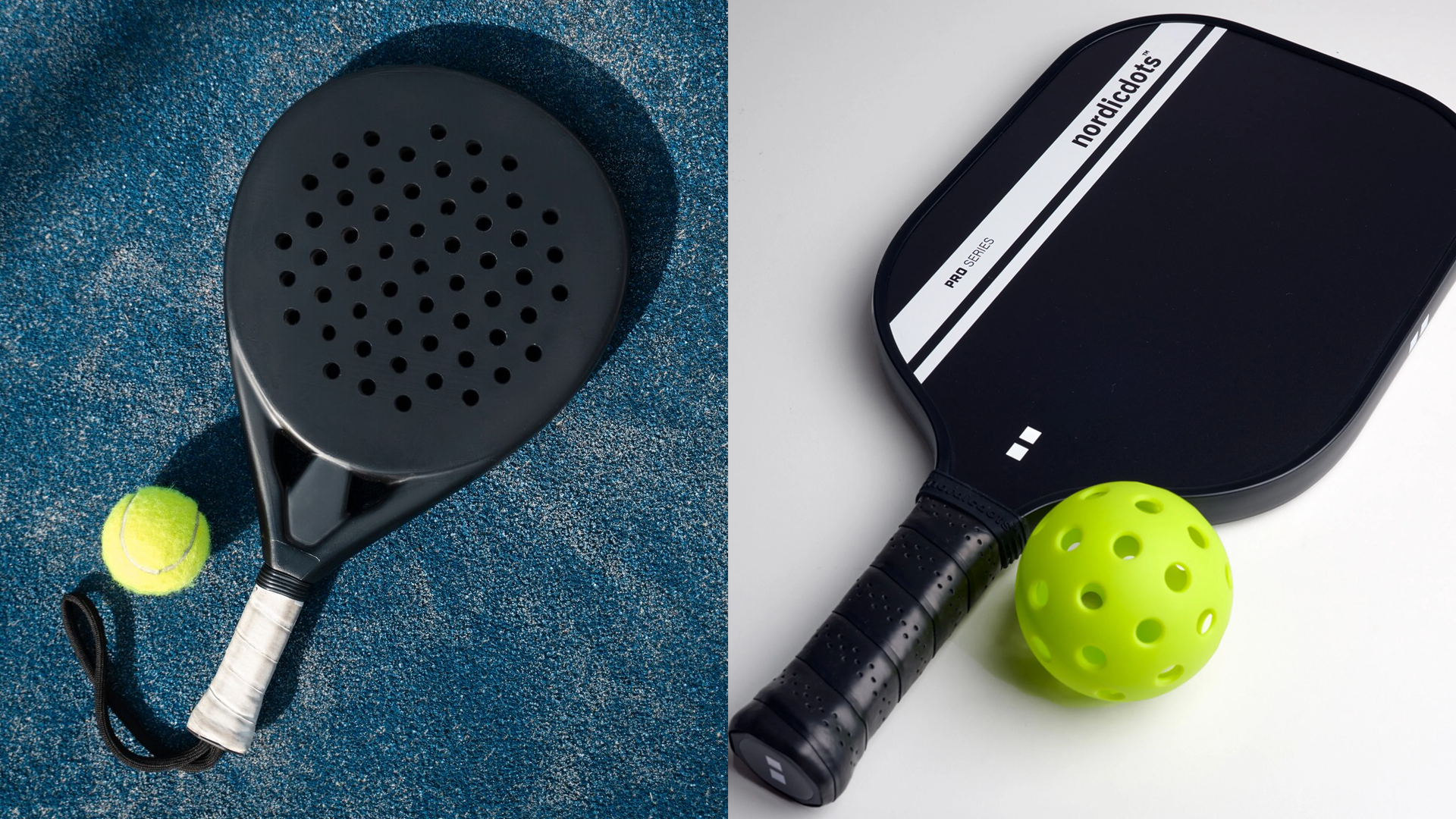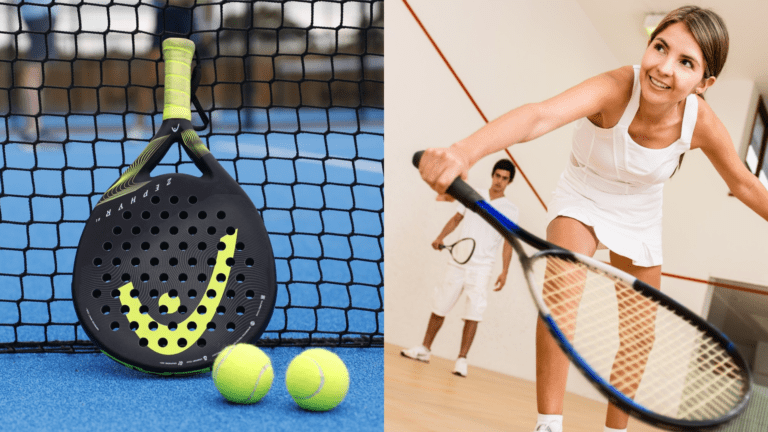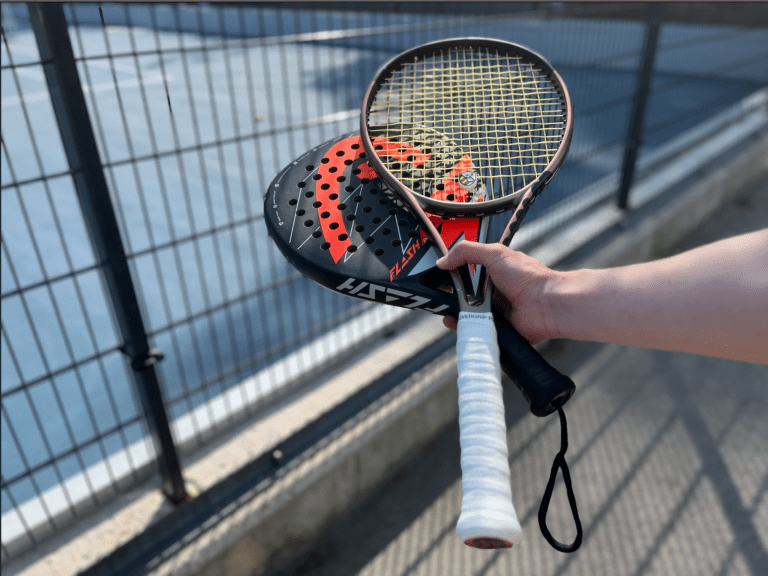If you’ve ever picked up both a padel and a pickleball racket, you’ll quickly notice they’re not the same—far from it. I’ve spent plenty of hours on both courts, and I can tell you that while the sports share some similarities, their rackets bring out unique playing styles. Whether you’re deciding which sport to dive into or just curious about how the equipment stacks up, I’ll break down everything you need to know from hands-on experience.
Racket Shape and Design: What Sets Them Apart?

Padel Rackets: Solid and Balanced
Padel rackets are made with a solid surface and small perforations to reduce air resistance. They’re typically thicker—around 38mm—and have a teardrop, round, or diamond shape. Each shape caters to a different playing style. For example, a round racket offers better control, while a diamond-shaped one boosts power. The handle length is relatively short, giving you more wrist mobility, which is key when executing quick volleys and spins.
Pickleball Paddles: Lightweight with Variety
Pickleball paddles, on the other hand, are thinner and lighter, often made from composite materials like graphite or fiberglass. They’re rectangular or oval-shaped with a longer handle, similar to a tennis racket’s grip. This allows for two-handed shots, which you’ll rarely see in padel. The surface is smooth, designed for quick rebounds rather than spin-heavy plays.
Weight and Feel: How It Affects Your Game
Padel Rackets: Heavier for Control and Power
Padel rackets generally weigh between 340-390 grams. The extra weight helps when smashing or defending near the glass walls. I personally find that heavier rackets offer more stability during volleys, which is crucial when your opponent is firing shots at your feet.
Pickleball Paddles: Light and Maneuverable
Pickleball paddles range from 200-250 grams, making them noticeably lighter. This reduces arm fatigue over long games and allows for rapid hand movements, especially in quick exchanges at the non-volley zone (“the kitchen”). The lighter weight benefits players who rely on finesse and precise shot placement.
Material Differences: What’s Under the Surface?
Padel Rackets: Foam Cores and Carbon Frames
Most padel rackets have an EVA foam core, providing a mix of power and comfort. Advanced models use carbon fiber frames for durability and better energy transfer. The foam core also absorbs vibrations, making the racket easier on your joints—a big plus during long rallies.
Pickleball Paddles: Polymer, Aluminum, and Composite Cores
Pickleball paddles come with various core materials:
- Polymer cores for quieter, softer hits.
- Aluminum cores for control-oriented players.
- Nomex cores for those seeking a crisp, powerful strike. The surface materials, like graphite or fiberglass, also influence shot speed and control.
Playing Style Influence: How the Racket Shapes Your Game
With a Padel Racket
Playing padel demands quick reflexes, controlled lobs, and strategic use of the glass walls. The racket’s design encourages wrist action and spin. If you like tactical rallies with plenty of variety, you’ll appreciate how a padel racket responds.
With a Pickleball Paddle
Pickleball is more about rapid exchanges and precise dinks near the net. The lighter paddle supports quick reactions but limits the ability to put heavy spin on the ball. Two-handed backhands are common, thanks to the longer handle. If you enjoy fast-paced action with quick volleys, pickleball paddles will suit you well.
Durability and Price: What Should You Expect?
- Padel Rackets: Quality rackets can be pricey, ranging from $100 to $400. Their materials ensure they last through intense games, but the foam core may wear down over time if you play frequently.
- Pickleball Paddles: Generally more affordable, paddles range from $50 to $200. High-end models with composite materials can withstand plenty of playtime, though lighter materials may chip sooner.
Key Takeaways
✅ Padel rackets are heavier, thicker, and designed for spin and control.
✅ Pickleball paddles are lighter with a longer handle, favoring quick exchanges.
✅ Padel rackets use foam cores and carbon frames; pickleball paddles use various cores like polymer and Nomex.
✅ Padel suits players who enjoy strategic wall play; pickleball favors rapid net exchanges.
✅ Durability and price differ, with padel rackets typically costing more.
FAQs
1. Can you use a padel racket for pickleball or vice versa?
No, each racket is tailored to its sport’s rules and playing style. Using the wrong racket would compromise your performance.
2. Which is better for beginners?
Pickleball paddles are generally easier to handle for new players, while padel rackets offer more control once you get the hang of the game.
3. Is there a significant weight difference?
Yes, padel rackets are heavier, affecting swing speed and control. Pickleball paddles are lighter, making them ideal for quick reactions.
4. Where can I buy quality rackets?
Amazon US has a wide selection of both padel rackets and pickleball paddles, catering to different skill levels and budgets.
#1 Resource For Padel Guides, News and Reviews Daily Stay Ahead with Expert Insights, Product Reviews, and Guides.





